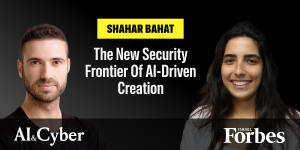Behind every successful terror organization stands an economic system, in many cases it’s a state,” declared the Chief of Staff, Lt. Gen. Herzi Halevi, several years ago during his tenure as the chief of the Military Intelligence Directorate. “In our region, Iran is the main financier of terror,” he determined. The terrorist state of Iran is without a doubt the main financier and important supporter of terror organizations in the Gaza Strip, and alongside it also stands Qatar – which has channeled hundreds of millions of dollars a year to Hamas over the past decade.
But alongside these countries, which directly and knowingly transfer huge sums redirected for building military capabilities against Israel, not a few European countries also contribute to the “war effort” of the terror organizations in Gaza. While not doing so directly and deliberately – organizations such as Hamas, Palestinian Islamic Jihad or the Popular Front for the Liberation of Palestine are defined in the European Union as terror organizations, so financial ties with them are prohibited – in many cases they do so despite warnings and while turning a blind eye.
The European money to fund terror passes through charities and NGOs spread across Europe and various “humanitarian” organizations connected to those terror organizations, which in fact serve as a direct channel to transfer funds for terror. European money also reaches Hamas through aid funds channeled to the Strip, which Hamas takes over and manages to divert tens of millions of dollars from to strengthen itself militarily and fund terror activity.
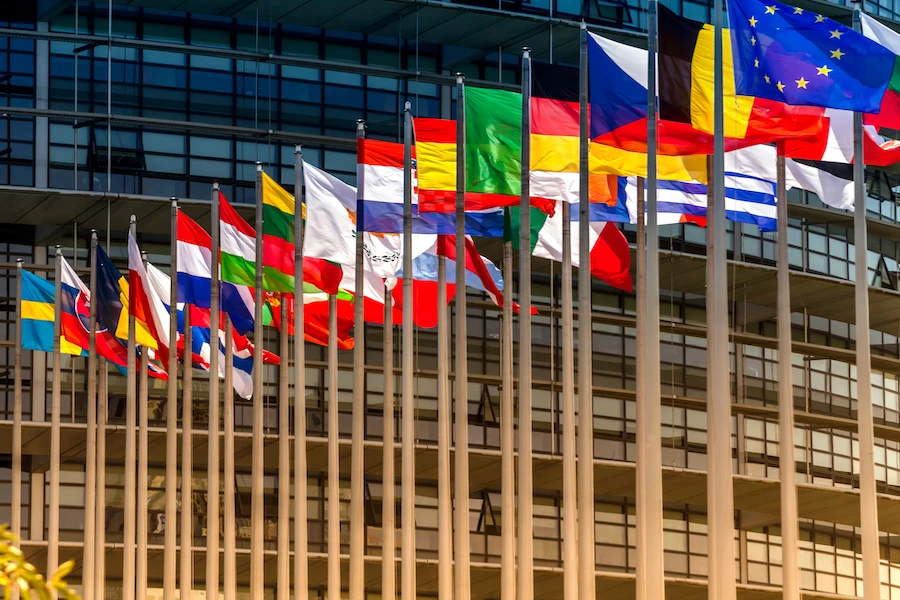
This shadow economy operates below the radar, convoluted and sophisticated. UN agencies and European governments find it difficult to identify this shadow economy, but they also make no great effort to track the money trail. And that’s all the terror organizations need: To ensure the continued flow of funds, they only need an overly conciliatory or loose interpretation of government and legal authorities, and a little sophistication on their part.
Charity for Hamas
“It’s hard to point today to associations or charity funds operating in Western countries overtly identified with Hamas that transfer funds to it openly,” explains attorney Nitsana Darshan-Leitner, chairwoman of Shurat HaDin, organization engaged in legal-economic struggle against terror bodies. “Any organization that would do so would face criminal charges for supporting terror”. “But Hamas are sophisticated,” she continues, “they don’t need transfers done overtly and explicitly. They do it under the radar by other means”.
Darshan-Leitner, who cooperated with the Mossad for many years in identifying terror organizations’ sources of funding, describes a pattern of money laundering that has become a common method in the flow of capital from ostensible charity organizations in Europe to terror organizations in the Strip: “The fund purchases various products and goods in Europe and transfers them to the Hamas organization in Gaza,” she describes, “Hamas sells the goods and receives cash in exchange.”
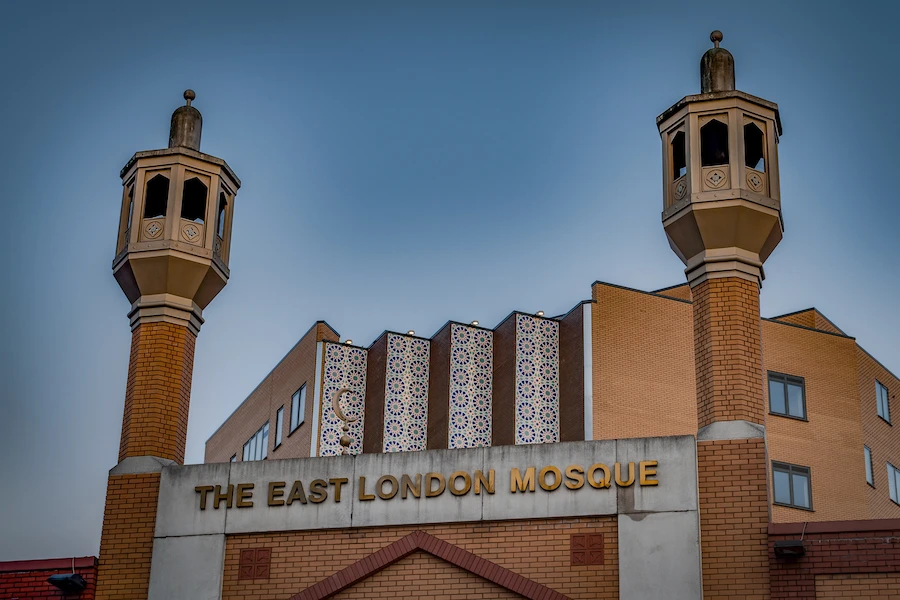
According to estimates, the scope of funds diverted from charity organizations and various NGOs directly into Hamas’ coffers is estimated at tens of millions of dollars annually – most of them from places in European countries operating there undisturbed. One of them is a charity called the ‘Islamic Relief Worldwide’ (IRW) founded in 1984 in Britain.
From its international headquarters in Birmingham it operates a network of branches, affiliated partners and representatives spread over more than 45 countries, operating as an “Islamic relief humanitarian organization” to raise donations for needy Muslims worldwide.
But the definition of “needy Muslims”, by the organization’s standards, is quite broad. Back in 2014, Defense Minister Moshe Ya’alon signed an administrative order declaring IRW an unauthorized association, an organization constituting a direct source of funding for the Hamas movement, thus prohibiting its activity in Israel. “IRW is one of Hamas’ sources of funding by raising money from various countries around the world,” was written in the order signed based on the intelligence assessment of the Coordinator of Government Activities in the Territories and the Israel Shin-Bet, which also stated the declaration of IRW as illegal is based on information accumulated over years indicating the fund is “a key player in funding Hamas”.
According to various sources, IRW senior officials include Muhammad Sawalha, one of the founders of Hamas’ military wing in the West Bank who currently resides in London.
But despite the Israeli Defense Ministry’s warning about the organization’s direct ties to terror organizations, it continues to operate undisturbed from Britain to this day. Moreover, its many activists spread across dozens of countries continue to raise more and more funds and donations amounting to hundreds of millions of dollars annually, while demonstrating a significant leap in its revenues in recent years.
IRW Total Income 2018-2022
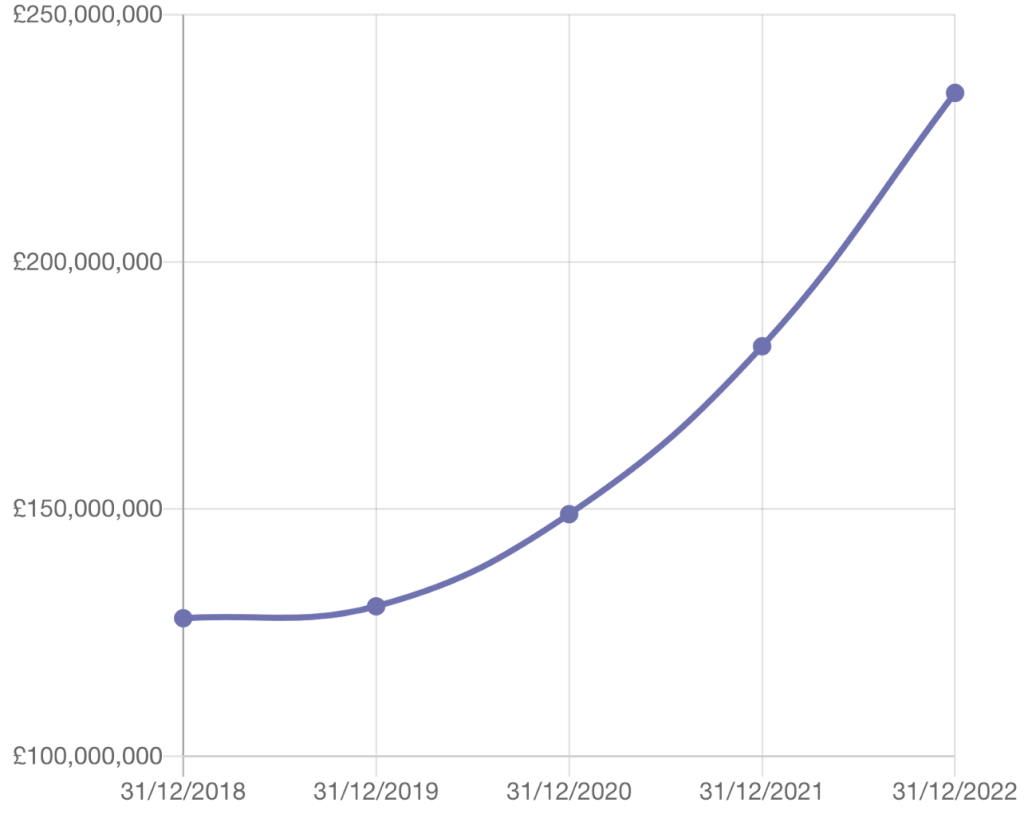
According to the Charity Commission for England and Wales, in 2022 IRW reported a total income of £234 million (about $285 million). This marks a dramatic increase in the organization’s revenues, which have surged annually since 2018 when its revenues stood at around £128 million ($155 million).
Israel flagged, Europe ignored
Alongside ostensible charity associations spread across Europe engaged in fundraising for terror organizations, civil-humanitarian Palestinian organizations operate in Europe, funded in part by the EU and maintaining close ties to terror elements, some even led and directed by them.
In 2021 the Defense Ministry designated six such organizations – including the ** Union of Palestinian Women’s Committees (UPWC), the Defense for Children International – Palestine (DCI-P) and the Union Of Agricultural Work Committees (UAWC) – as affiliated with the ‘Popular Front for the Liberation of Palestine’ (PLFP), an organization designated a terror organization by the US and EU.
These organizations operated under the guise of ‘civil society organizations’ but in fact constituted an arm of the terror organization’s leadership, which controlled them, directed their activities and appointed many field and management operatives, including some directly involved in terror activity. “In terms of financing, these organizations controlled by the Popular Front constitute a major source of funding for the organization as a whole and play a significant role in building the power and strengthening of the terror organization,” stated the Defense Ministry’s announcement at the time.
According to the announcement, these organizations received large sums of money from European countries and international organizations, using a variety of fraud and deception. “The money was used by the Popular Front for salaries for activists, recruitment of activists, promotion of PFLP activity and empowerment, promotion of PFLP activity in Jerusalem, payments to families of security prisoners and ‘martyrs’ and dissemination of the organization’s messages and ideology,” published by the Defense Ministry.
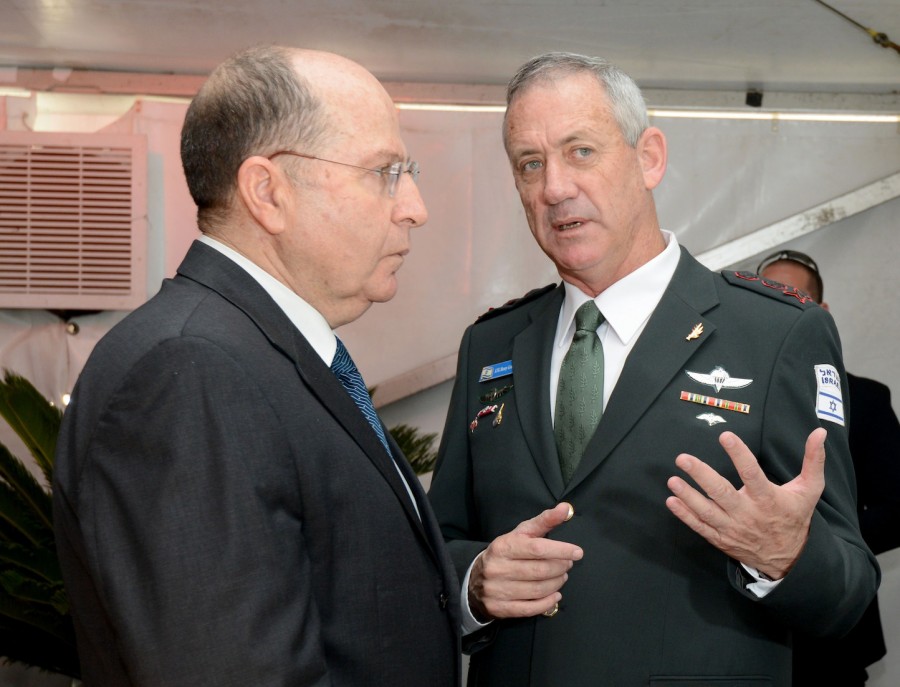
Europe was not convinced by this. Less than a year after the designation, nine countries – including France, Germany, Italy and Spain – announced rejection of the evidence presented to them by Israeli security officials and renewal of funding transfers to those organizations claiming that no substantive information was presented to them that would justify otherwise.
This is of course not the only example of the conciliatory approach towards those organizations common among not a few governments in Europe. A 2019 Strategic Affairs Ministry report shows how funds flow from the EU to Palestinian social-humanitarian organizations operating within the BDS framework, directly linked to terror organizations.
The organizations receive regular funding from EU countries, yet continue to maintain close ties with terror elements. “A significant part of the organizations receiving assistance from EU institutions, especially the Palestinian organizations, do not act with transparency and do not regularly expose their financial income and expenditures, raising concerns about the use of assistance funds,” the comprehensive report emphasized. In such a reality, leakage of funds from ostensibly legitimate organizations to terror elements is almost inevitable.
Based on the European Commission’s own records, direct funding channels were identified that were routinely transferred from the EU to BDS organizations such as ‘Al-Haq’ and ‘Al Mezan’ – organizations with direct ties to terror organizations. Incidentally one must wonder why – even assuming not a single euro reaches terror funding – Israel-friendly countries fund organizations calling for a boycott of Israel and overtly opposed to its existence. However, it’s clear that at least some of this money goes directly to terror.
European money continues flowing to BDS organizations such ‘Al Haq’ for example – an organization headed by a former senior member of the terrorist organization the PLFP and employs Popular Front terror operatives. “Thereby,” the report’s authors emphasize, “arises concern that the European taxpayer’s money also finds its way to elements maintaining ties with terror organizations”.
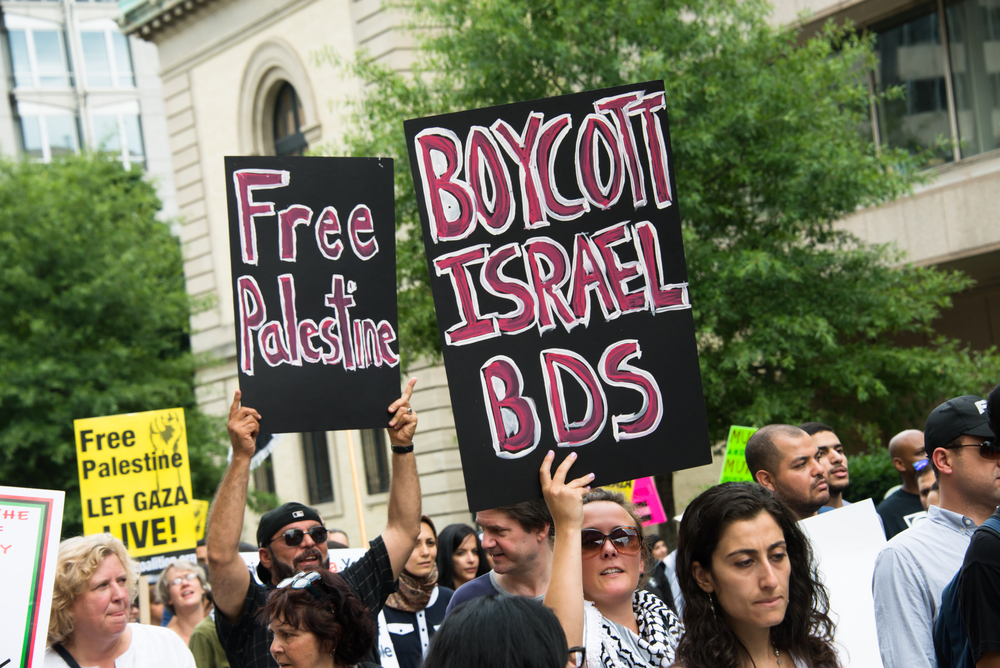
Another example of many illustrates how a Norwegian organization called NPA (Norwegian People’s Aid)– an ostensible humanitarian aid organization – actively promotes boycotts against Israel and indirectly channels funds to finance terror activity against it.
In April 2018, US authorities publicized investigation findings they conducted against the organization, showing how over the years NPA activists funded projects for Gaza youth empowerment in which Hamas and the Popular Front members took part, aiming to prepare them to be active participants in political processes. The findings also showed that the organization even provided various services in Iran in the energy sector.
On the background of these findings, it was determined that the organization’s statements to US authorities were false and it was fined $2 million. Funding to pay the fine was not lacking for it. According to the NGO Monitor research institute, in 2020 the organization’s annual budget stood at $100 million. The Norwegian government funds about 50% of its annual budget alongside additional countries like Sweden, the US, Switzerland, Germany, Britain, the Netherlands, the EU and Japan.
Aid money
The conciliatory approach of Western countries ignores clear warning signs repeatedly presented by intelligence and security officials and pushes aside evidence directly linking those ostensible civil-humanitarian organizations to terror elements. The exact same approach characterizes their attitude regarding aid money channeled to the Strip.
In practice, the mechanism for transferring aid and civilian rehabilitation funds for the Strip is carried out without supervision and alarming lack of transparency, despite warnings from various intelligence officials about how those funds are channeled directly to the Strip’s terror organizations. And so, thousands of tons of goods and equipment are diverted from civil projects to terror activities projects involving tunnel digging, rocket manufacture and warfare.
“After Operation Protective Edge in 2014, Western countries pressed Israel to transfer concrete and materials to the Strip. Israel objected, rightly so – but later consented and approved the transfer,” recounts attorney Darshan-Leitner. “Hamas exploited this and grabbed anything that moved in the Strip that could be used for military needs – concrete, iron, steel, fuel. Took everything in order to arm itself and build itself up militarily. That’s how, quietly, they built this horror empire”.
Last year, EU countries transferred aid totaling about 300 million euros to Palestinian bodies – a small part of a longstanding commitment to transfer 1.8 billion euros between 2021-2024, according to Politico. On paper, this money is intended for aid to the Palestinian Authority in paying state employee salaries, financing refugee aid projects through the UN and financing “non-governmental organizations”.
International aid to Palestinian authority and Gaza strip ($B)
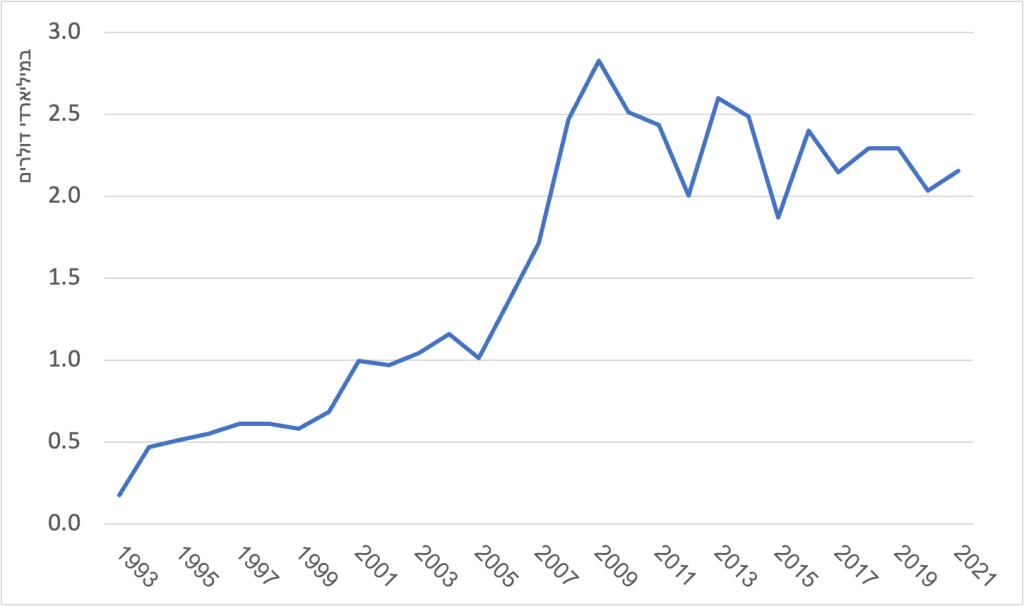
The Ad Hoc Liaison Committee (AHLC), for example, constitutes one of the main funding channels streaming money from Europe to Gaza. The entities managed by the Norwegian government and under the auspices of the EU has been signed in recent years on transferring hundreds of millions of dollars for the purpose of Gaza rehabilitation and civilian aid there.
“Very little of this money actually serves the purpose for which it is intended,” clarifies Uzi Shaya, former senior Mossad official who gained extensive experience in financial warfare during his service as a senior official in the ‘Harpoon’ unit, the clandestine unit established to eliminate terror organizations’ financial infrastructures. According to Shaya, most of the money eventually finds its way to the corruption mechanisms of the Palestinian Authority, to terror organizations’ welfare mechanisms and to military terror activity. “In my estimate, about 30% of it trickles into terror activity,” he says.
As Gaza’s sovereign and ruler, Hamas clips fat coupons from taxing the aid money and currency exchangers – many of them the organization’s operatives and supporters. The extensive tax network the organization has built sweeps hefty shares of capital flowing into Gaza as humanitarian aid. For example, Hamas collects tax from currency exchange companies, which convert the foreign currency entering Gaza into shekels, and funnels tens of millions of dollars into its coffers annually.
And one must recall that for many long years the most important component in Hamas funding stemmed from the Qatari money – the hefty suitcases of cash handed over to it like clockwork every month with Israel’s agreement and sponsorship. Hundreds of millions of dollars annually. Thereby, Israel itself had a part in building the financial independence of the terror organization.
“We tend to mistakenly think that Qatar transferred money based on orderly lists of people so these funds wouldn’t reach Hamas,” explains attorney Darshan-Leitner. “That’s a mistake. Most people who received the money are Hamas members,” she stresses. “Security experts admitted in the past there is no ability to track the money recipients and whoever handed over those lists was the local Gaza government – meaning Hamas itself – so the clear assumption is that a large part were Hamas members”.
Already two years ago in a special interview we conducted with him as part of an international research report on terror financing, former senior Mossad official Uzi Shaya warned about the phenomenon that became a dangerous method: “Israel allows tens of millions of dollars to be brought into Gaza every month – thereby enabling the organization’s economic development,” he warned then, pointing to those Hamas suitcases of cash as a major breaking point in the financial war on terror organizations: “This is tantamount to breaking everything. To say that everything we did in the past is simply worthless. After transferring $30 million to Hamas, it is very problematic to conduct an operation to halt 150,000 shekels.” He warned, “The power of this tool was in the strategic conception and understanding that this is one of the most important legs in fighting terror – so to say that we are regressing here would be a delicate description of the situation.”




